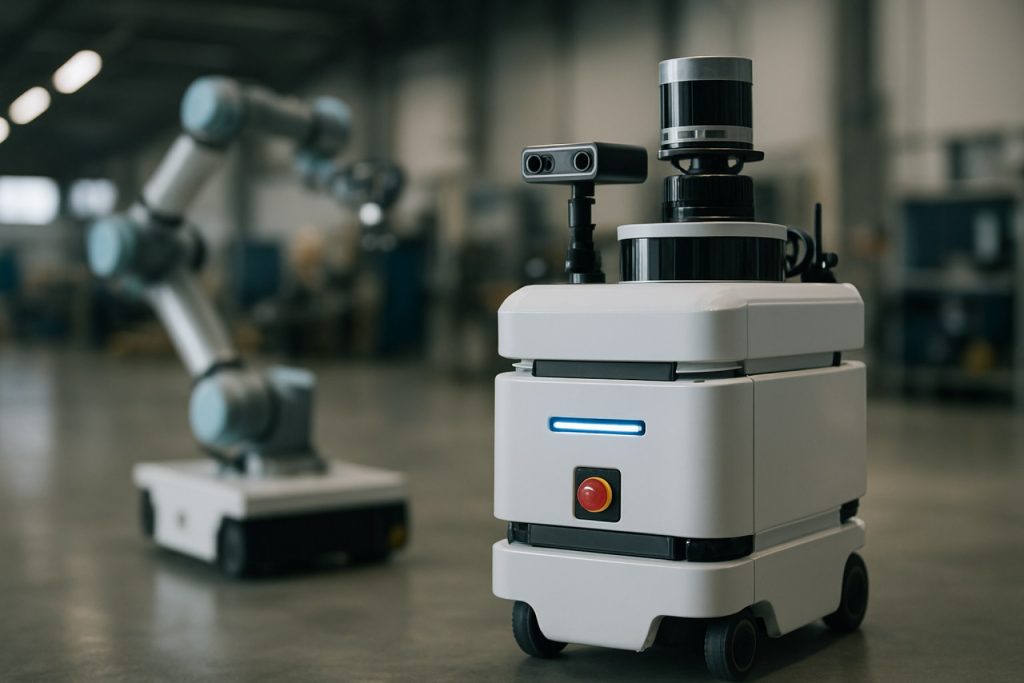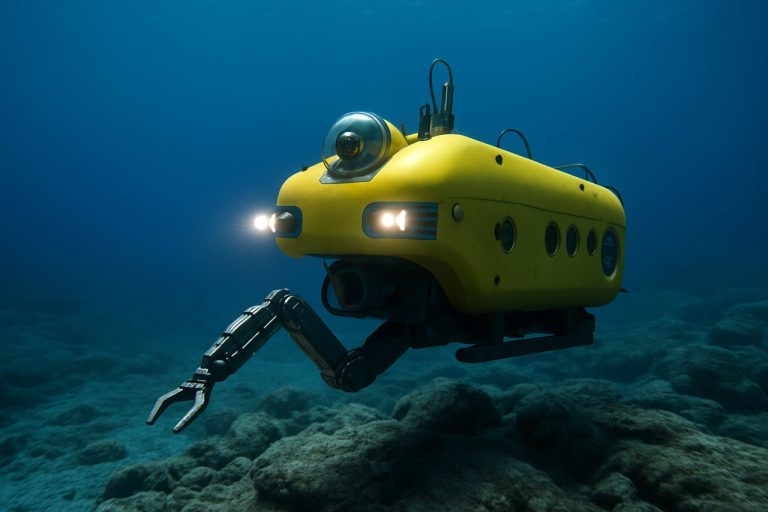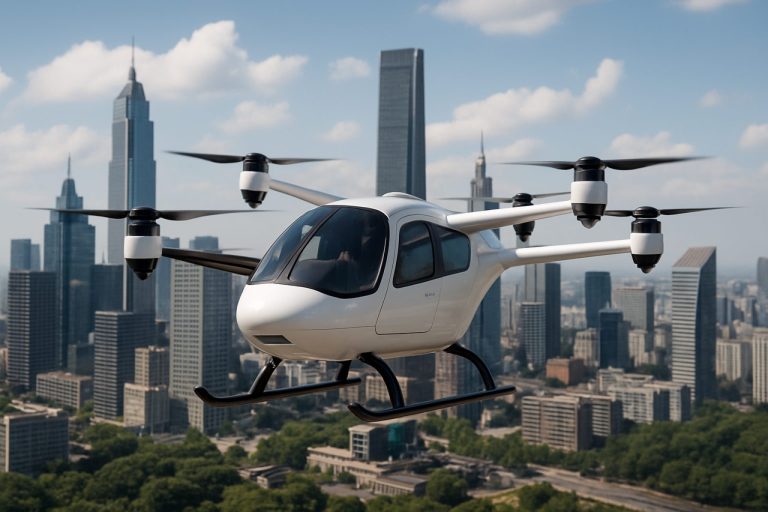
Sensor Fusion for Autonomous Robotics in 2025: Market Dynamics, Technology Innovations, and Strategic Forecasts. Explore Key Growth Drivers, Regional Trends, and Competitive Insights Shaping the Next Five Years.
- Executive Summary & Market Overview
- Key Technology Trends in Sensor Fusion for Autonomous Robotics
- Competitive Landscape and Leading Players
- Market Growth Forecasts and Revenue Projections (2025–2030)
- Regional Analysis: Opportunities and Hotspots
- Challenges, Risks, and Emerging Opportunities
- Future Outlook: Strategic Recommendations and Innovation Pathways
- Sources & References
Executive Summary & Market Overview
Sensor fusion for autonomous robotics refers to the integration of data from multiple sensor modalities—such as LiDAR, radar, cameras, ultrasonic, and inertial measurement units (IMUs)—to enable robots to perceive, interpret, and interact with their environments more effectively. As of 2025, the global market for sensor fusion in autonomous robotics is experiencing robust growth, driven by advancements in artificial intelligence, edge computing, and the proliferation of autonomous systems across industries including automotive, logistics, manufacturing, and healthcare.
According to MarketsandMarkets, the sensor fusion market for robotics is projected to reach multi-billion dollar valuations by the mid-2020s, with a compound annual growth rate (CAGR) exceeding 20%. This surge is attributed to the increasing demand for higher levels of autonomy, safety, and reliability in robotic platforms. The automotive sector, particularly autonomous vehicles, remains a primary driver, but significant adoption is also observed in warehouse automation, delivery robots, and service robotics.
Key industry players such as Bosch, NXP Semiconductors, and Analog Devices are investing heavily in sensor fusion technologies, focusing on real-time data processing, low-latency decision-making, and robust perception in complex environments. The integration of machine learning algorithms with sensor fusion frameworks is enabling robots to achieve higher situational awareness and adaptability, even in dynamic or unstructured settings.
Geographically, North America and Asia-Pacific are leading the adoption curve, with significant R&D investments and government initiatives supporting autonomous robotics. For instance, China’s “Made in China 2025” strategy and the U.S. Department of Transportation’s autonomous vehicle guidelines are catalyzing innovation and deployment of sensor fusion solutions (McKinsey & Company).
- Market Drivers: Rising demand for automation, advancements in sensor technology, and the need for enhanced safety and reliability.
- Challenges: High integration complexity, data synchronization issues, and the need for standardized protocols.
- Opportunities: Expansion into new verticals such as agriculture, mining, and healthcare robotics.
In summary, sensor fusion is a foundational technology for the next generation of autonomous robotics, underpinning the sector’s rapid evolution and expanding commercial potential in 2025 and beyond.
Key Technology Trends in Sensor Fusion for Autonomous Robotics
Sensor fusion is a cornerstone technology in autonomous robotics, enabling robots to interpret complex environments by integrating data from multiple sensor modalities. In 2025, several key technology trends are shaping the evolution and deployment of sensor fusion systems in autonomous robotics, driven by advances in artificial intelligence, edge computing, and sensor hardware.
- AI-Driven Sensor Fusion Algorithms: The adoption of deep learning and advanced machine learning models is enhancing the ability of robots to process and combine data from heterogeneous sensors such as LiDAR, radar, cameras, and inertial measurement units (IMUs). These AI-powered algorithms improve perception accuracy, object detection, and environmental mapping, even in challenging conditions. Companies like NVIDIA and Intel are at the forefront, integrating AI accelerators into robotics platforms to enable real-time sensor fusion.
- Edge Computing for Real-Time Processing: The shift toward edge computing is reducing latency and bandwidth requirements by processing sensor data locally on the robot. This trend is critical for time-sensitive applications such as autonomous vehicles and industrial robots, where split-second decisions are necessary. According to Gartner, edge AI adoption in robotics is expected to grow significantly through 2025, enabling more robust and scalable sensor fusion architectures.
- Multi-Modal and Redundant Sensing: To enhance reliability and safety, autonomous robots are increasingly equipped with redundant and diverse sensor arrays. This multi-modal approach allows for cross-validation of sensor data, mitigating the risk of single-sensor failure and improving performance in adverse weather or lighting conditions. Bosch Mobility and Velodyne Lidar are developing sensor suites that combine vision, LiDAR, and radar for comprehensive situational awareness.
- Standardization and Interoperability: Industry-wide efforts are underway to standardize sensor interfaces and data formats, facilitating seamless integration and interoperability across platforms. Initiatives led by organizations such as the Robotic Industries Association are accelerating the adoption of open standards, which is crucial for scaling sensor fusion solutions in diverse robotic applications.
These trends collectively point toward a future where sensor fusion systems are more intelligent, reliable, and adaptable, underpinning the next generation of autonomous robotics across industries from logistics and manufacturing to mobility and service robotics.
Competitive Landscape and Leading Players
The competitive landscape for sensor fusion in autonomous robotics is rapidly evolving, driven by advancements in artificial intelligence, machine learning, and sensor technologies. As of 2025, the market is characterized by a mix of established technology giants, specialized robotics firms, and innovative startups, all vying for leadership in delivering robust sensor fusion solutions that enable higher levels of autonomy, safety, and operational efficiency.
Key players in this space include NVIDIA Corporation, which leverages its powerful AI computing platforms and software frameworks such as DriveWorks to integrate data from cameras, LiDAR, radar, and ultrasonic sensors for real-time perception and decision-making in autonomous systems. Intel Corporation, through its acquisition of Mobileye, has also established a strong foothold, offering advanced sensor fusion algorithms that combine vision and radar data for enhanced situational awareness in both automotive and robotics applications.
Another significant player is Robert Bosch GmbH, which provides comprehensive sensor suites and fusion modules tailored for industrial and service robots. Bosch’s solutions emphasize reliability and scalability, catering to sectors such as logistics, manufacturing, and healthcare robotics. ABB Ltd and Siemens AG are also prominent, integrating sensor fusion into their industrial automation and robotics platforms to enable precise navigation and manipulation in dynamic environments.
Startups and niche firms are contributing significant innovation. Oxbotica specializes in software-only sensor fusion platforms that are hardware-agnostic, allowing flexible deployment across different robotic systems. Aurora Innovation and Argo AI are notable for their work in autonomous vehicle sensor fusion, with technologies increasingly being adapted for broader robotics use cases.
Strategic partnerships and acquisitions are shaping the competitive dynamics. For example, collaborations between sensor manufacturers like Velodyne Lidar and robotics software providers are accelerating the integration of high-fidelity sensor data. The market is also witnessing increased investment in R&D, with companies focusing on improving real-time data processing, reducing latency, and enhancing the robustness of sensor fusion algorithms under challenging conditions.
Overall, the sensor fusion for autonomous robotics market in 2025 is marked by intense competition, rapid technological progress, and a growing emphasis on interoperability and scalability, as players seek to address the diverse needs of industrial, commercial, and service robotics sectors.
Market Growth Forecasts and Revenue Projections (2025–2030)
The market for sensor fusion in autonomous robotics is poised for robust growth in 2025, driven by accelerating adoption across industries such as automotive, logistics, manufacturing, and healthcare. According to projections by MarketsandMarkets, the global sensor fusion market is expected to reach approximately USD 8.2 billion in 2025, with autonomous robotics constituting a significant and rapidly expanding segment within this total. The increasing complexity of autonomous systems, which require real-time data integration from multiple sensor modalities (e.g., LiDAR, radar, cameras, IMUs), is fueling demand for advanced sensor fusion solutions.
In 2025, revenue from sensor fusion technologies specifically tailored for autonomous robotics is projected to surpass USD 1.7 billion, according to International Data Corporation (IDC). This growth is underpinned by the proliferation of autonomous mobile robots (AMRs) in warehouses and factories, as well as the scaling of autonomous vehicle pilots and deployments. The logistics sector, in particular, is expected to account for over 30% of the sensor fusion market share in autonomous robotics, as companies invest in automation to address labor shortages and improve operational efficiency.
Regionally, North America and Asia-Pacific are anticipated to lead market expansion in 2025. North America’s dominance is attributed to strong R&D investments and early adoption by technology leaders, while Asia-Pacific’s growth is propelled by rapid industrial automation in China, Japan, and South Korea. According to Gartner, the Asia-Pacific region is expected to experience a compound annual growth rate (CAGR) exceeding 18% in sensor fusion for robotics through 2025.
- Automotive: Sensor fusion revenue in autonomous vehicles is forecast to grow by 22% year-over-year, as OEMs accelerate development of Level 4 and Level 5 systems.
- Industrial & Logistics: Adoption of sensor fusion in AMRs and AGVs is projected to increase by 19% in 2025, driven by e-commerce and supply chain automation.
- Healthcare: Medical robotics, including surgical and service robots, will see sensor fusion revenue rise by 15%, as precision and safety requirements intensify.
Overall, 2025 will mark a pivotal year for sensor fusion in autonomous robotics, setting the stage for even faster growth and broader adoption in the latter half of the decade.
Regional Analysis: Opportunities and Hotspots
Regional opportunities in sensor fusion for autonomous robotics are shaped by a combination of industrial demand, government initiatives, R&D ecosystems, and the pace of technology adoption. In 2025, several regions stand out as hotspots for growth and innovation in this sector.
- North America: The United States remains a global leader, driven by robust investments in autonomous vehicles, defense robotics, and industrial automation. Silicon Valley and Boston are particularly active, with startups and established players like NVIDIA and Intel advancing sensor fusion algorithms and hardware. The U.S. Department of Defense and DARPA continue to fund sensor fusion research, while the automotive sector, led by Tesla and Ford, accelerates adoption in self-driving platforms. Canada, with its AI hubs in Toronto and Montreal, also contributes significantly, especially in research and simulation environments.
- Europe: Germany, France, and the UK are at the forefront, leveraging strong automotive and robotics industries. German automakers such as BMW and Volkswagen are integrating advanced sensor fusion in autonomous vehicles. The European Union’s Horizon Europe program provides substantial funding for collaborative R&D, fostering cross-border innovation. Scandinavia, particularly Sweden and Finland, is emerging as a testbed for autonomous delivery robots and smart city applications.
- Asia-Pacific: China is rapidly scaling up, with government-backed initiatives and aggressive investments from companies like BYD and Huawei. The region’s manufacturing dominance and smart city projects create fertile ground for sensor fusion deployment in logistics, surveillance, and urban mobility. Japan and South Korea, home to robotics giants such as FANUC and Samsung, are pushing the envelope in industrial and service robotics, with a focus on precision and reliability.
- Middle East & Africa: While still nascent, the Middle East is investing in smart infrastructure and autonomous transport, particularly in the UAE and Saudi Arabia. These countries are piloting sensor fusion technologies in urban mobility and security robotics as part of their Vision 2030 strategies.
Overall, the most dynamic opportunities in 2025 are concentrated in North America, Western Europe, and East Asia, where mature ecosystems, funding, and end-user demand converge to accelerate sensor fusion innovation for autonomous robotics. Emerging regions are expected to follow as infrastructure and regulatory frameworks evolve.
Challenges, Risks, and Emerging Opportunities
Sensor fusion is a cornerstone technology for autonomous robotics, enabling machines to interpret complex environments by integrating data from multiple sensors such as LiDAR, radar, cameras, and inertial measurement units. As the market for autonomous robotics accelerates into 2025, several challenges and risks persist, but new opportunities are also emerging.
One of the primary challenges is the real-time processing and synchronization of heterogeneous sensor data. Autonomous robots require low-latency, high-throughput fusion algorithms to make split-second decisions, especially in dynamic or unpredictable environments. The computational burden of advanced sensor fusion, particularly with the proliferation of high-resolution sensors, can strain onboard processing capabilities and energy resources. This is especially critical for mobile robots and drones, where power efficiency is paramount (NVIDIA).
Another significant risk is the reliability and robustness of sensor fusion algorithms in adverse conditions. Sensors can be affected by weather, lighting, or electromagnetic interference, leading to degraded or conflicting data. Ensuring redundancy and fail-safe mechanisms is essential, particularly for safety-critical applications such as autonomous vehicles and industrial robots. The lack of standardized testing and validation frameworks for sensor fusion systems further complicates deployment and regulatory approval (ISO).
Cybersecurity is an emerging concern as sensor fusion systems become more interconnected. Attackers may exploit vulnerabilities in sensor data streams or fusion algorithms, potentially leading to incorrect perception and unsafe behavior. The industry is responding with secure hardware modules and encrypted communication protocols, but comprehensive solutions are still evolving (IoT Security Foundation).
Despite these challenges, new opportunities are arising. Advances in edge AI chips and neuromorphic computing are enabling more efficient, real-time sensor fusion at the device level, reducing reliance on cloud processing (Qualcomm). Additionally, the integration of 5G connectivity is facilitating distributed sensor fusion, where robots can share and aggregate sensor data for enhanced situational awareness (Ericsson). The growing adoption of open-source sensor fusion frameworks is also accelerating innovation and lowering barriers to entry for startups and research institutions.
In summary, while sensor fusion for autonomous robotics faces technical, operational, and security-related hurdles in 2025, the rapid evolution of hardware, connectivity, and collaborative software ecosystems is unlocking new pathways for robust, scalable, and intelligent robotic systems.
Future Outlook: Strategic Recommendations and Innovation Pathways
Looking ahead to 2025, the future of sensor fusion in autonomous robotics is poised for significant transformation, driven by advances in artificial intelligence, edge computing, and the proliferation of diverse sensor modalities. Strategic recommendations for stakeholders in this sector focus on three core areas: technological integration, ecosystem collaboration, and innovation in data processing.
- Technological Integration: Companies should prioritize the seamless integration of heterogeneous sensors—such as LiDAR, radar, cameras, and inertial measurement units (IMUs)—to enhance perception accuracy and robustness. The trend toward multi-modal sensor fusion is expected to accelerate, with leading robotics firms investing in proprietary algorithms that leverage deep learning for real-time data interpretation. For example, NVIDIA and Intel are developing platforms that support scalable sensor fusion architectures, enabling more reliable navigation and object detection in complex environments.
- Ecosystem Collaboration: Strategic partnerships between sensor manufacturers, robotics OEMs, and software developers will be crucial. Open-source initiatives and standardized communication protocols, such as those promoted by the Open Source Robotics Foundation, are expected to lower integration barriers and foster interoperability. Collaborative innovation will also help address challenges related to sensor calibration, synchronization, and data redundancy.
- Innovation in Data Processing: The shift toward edge AI and distributed computing will be a key innovation pathway. Processing sensor data locally on the robot reduces latency and bandwidth requirements, which is critical for real-time decision-making. Companies like Qualcomm are investing in edge AI chipsets tailored for robotics, while startups are exploring neuromorphic computing to further optimize power efficiency and processing speed.
In summary, the 2025 outlook for sensor fusion in autonomous robotics is defined by a move toward more intelligent, collaborative, and efficient systems. Stakeholders who invest in cross-disciplinary R&D, embrace open standards, and leverage advances in edge computing will be best positioned to capture emerging opportunities in industrial automation, logistics, and service robotics. According to IDC, the global market for autonomous robotics is projected to grow at a double-digit CAGR through 2025, underscoring the urgency for strategic innovation in sensor fusion technologies.
Sources & References
- MarketsandMarkets
- Bosch
- NXP Semiconductors
- Analog Devices
- McKinsey & Company
- NVIDIA
- Bosch Mobility
- Velodyne Lidar
- Siemens AG
- Oxbotica
- Aurora Innovation
- International Data Corporation (IDC)
- Volkswagen
- BYD
- Huawei
- FANUC
- ISO
- IoT Security Foundation
- Qualcomm
- Open Source Robotics Foundation



